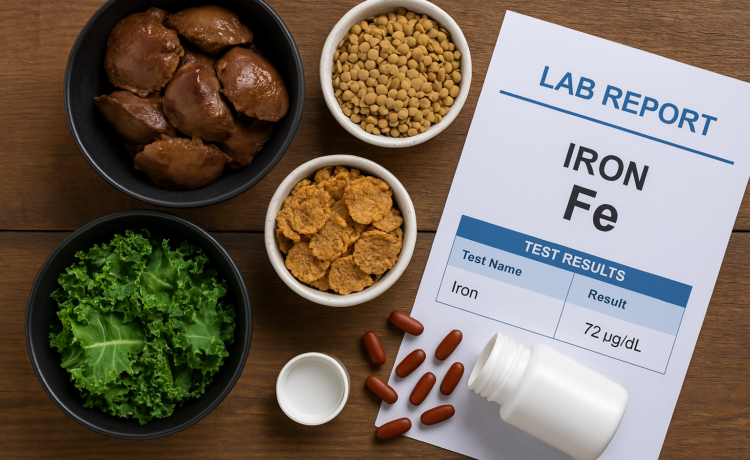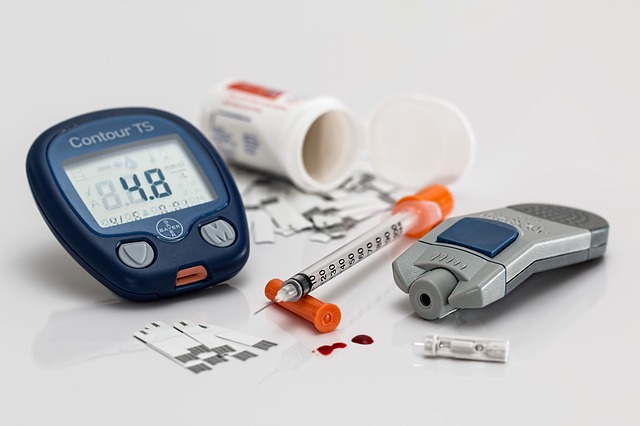Last Updated on April 11, 2025
Iron plays a vital role in our overall health, particularly in the formation of red blood cells and the transportation of oxygen throughout the body.
Understanding how iron levels affect the body — and knowing the signs and symptoms of too little or too much is essential for maintaining long-term well-being.
In this article, we’ll explore how common iron deficiency is, why it occurs, what symptoms to watch for, and how both deficiency and overload can be managed.
How Common is Iron Deficiency and What Causes It?
Iron deficiency affects 14% of all adults in the U.S.; among reproductive-age non-pregnant women, about 37% have iron deficiency.
Individuals can have iron deficiency with or without anemia (anemia means not enough red blood cells or low hemoglobin). Conversely, some people have anemia but “low iron” is not the cause.
Women lose iron from menstruation, and pregnant women need more iron for the developing fetus. Men who have iron deficiency most likely are losing blood, such as from a bleeding ulcer, or a polyp in the colon.
People who have had gastric bypass surgery have trouble absorbing iron from the diet. In some parts of the world, intestinal parasites cause iron deficiency.
The good news is that iron deficiency is often treatable once the underlying cause is identified.
Recognizing the symptoms
While some people feel fine with iron deficiency, others may experience fatigue, irritability, decreased concentration (“brain fog”), shortness of breath with running or other exercise, restless legs syndrome, or unusual cravings such as ice (this is called “pica”).
Since some of these symptoms (such as fatigue and brain fog) can have many other causes, it’s important not to self-diagnose. If you’re experiencing persistent symptoms, talk to your healthcare provider and ask about getting tested for iron deficiency.
Two common tests can help with diagnosis:
- A ferritin test, which measures how much iron is stored in your body.
- A hemoglobin test, or a broader complete blood count (CBC), which measures red blood cells and can detect anemia.
Once testing confirms iron deficiency or anemia, understanding why iron is important to your body can help make sense of the next steps in treatment and prevention.
Ways to prevent and treat iron deficiency
Like other essential elements such as vitamins, iron needs to come from the diet.
Foods rich in iron include animal meats (particularly liver), fortified cereals, and legumes (chickpeas, lentils, most types of beans), kale and spinach.
However, once iron deficiency develops, diet alone will not correct the problem. The underlying cause –whether it’s blood loss from menstruation or another condition like a bleeding polyp in the colon — needs to be identified and treated by a healthcare provider.
Iron supplements are commonly used and are available over the counter at a relatively low cost. Some people may experience side effects like stomach upset, constipation, or nausea when taking iron pills.
To minimize side effects and improve tolerance:
- Try taking iron in the evening
- Start by taking it every other day (e.g., Mon-Wed-Fri-Sat)
To improve absorption:
- Take iron pills with orange juice or vitamin C
- Avoid calcium-rich foods or supplements, tea, and coffee within one hour before or after taking iron – these can block absorption.
Note: So called “slow release” iron pills result in lower iron absorption compared to standard formulations, so they are usually not recommended.
People typically feel better after several weeks of oral iron. Depending on the presence or degree of anemia, your provider may recommend follow-up blood tests to monitor progress.
Your provider may recommend an iron infusion if there is no improvement despite taking iron and treating the underlying cause. While iron deficiency is far more common, it’s also important to know that too much iron can be harmful — and in some cases, may require medical treatment.
Can you have too much iron?
Even though it’s not very common, some people do have too much iron in their bodies.
This usually happens because of a genetic condition passed down in families, caused by a change in a gene called C282Y. This gene change is more common in people with northern European or Irish backgrounds.
Oddly enough, one of the main symptoms of iron overload is fatigue, just like with low iron. Other signs can include.
- Joint pain, or arthritis, in the knuckles of your hands.
- A family history of iron overload (relatives who were told they had too much iron).
Having too much iron can harm your liver and other organs, so it’s important to see a healthcare provider if you think this might be a concern.
The most common method of treatment is removing blood from your body, similar to donating blood. This helps lower the amount of iron over time.
Final thoughts
Iron plays a big role in keeping our bodies healthy. It helps red blood cells carry oxygen, supports our muscles, and gives us energy. Not getting enough iron is common and can make you feel tired, foggy, or out of breath. Fortunately, it’s easy to treat once
At the same time, too much iron can also be harmful, even though it’s less common. That’s why it’s important to talk to a healthcare provider if you have symptoms or if your family has a history of iron problems.
Whether you’re dealing with low iron or wondering about iron overload, simple blood tests can help find answers. With the right care, you can feel better and keep your body working at its best.





